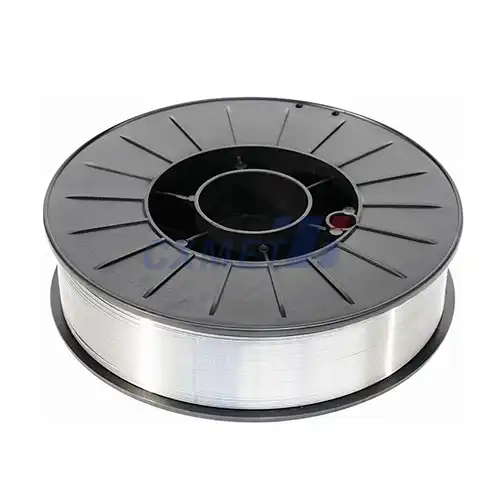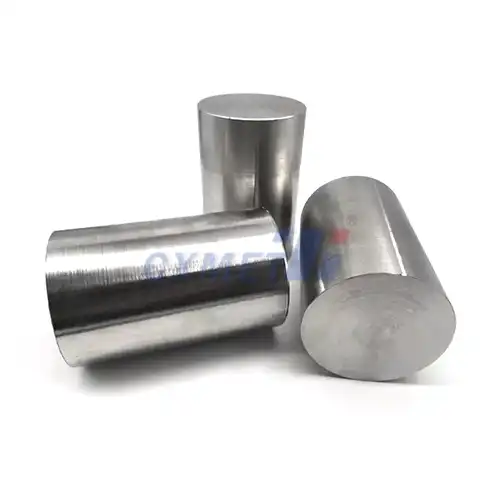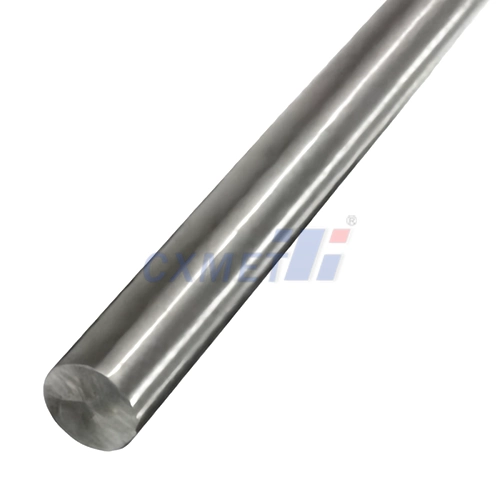- English
- French
- German
- Portuguese
- Spanish
- Russian
- Japanese
- Korean
- Arabic
- Greek
- German
- Turkish
- Italian
- Danish
- Romanian
- Indonesian
- Czech
- Afrikaans
- Swedish
- Polish
- Basque
- Catalan
- Esperanto
- Hindi
- Lao
- Albanian
- Amharic
- Armenian
- Azerbaijani
- Belarusian
- Bengali
- Bosnian
- Bulgarian
- Cebuano
- Chichewa
- Corsican
- Croatian
- Dutch
- Estonian
- Filipino
- Finnish
- Frisian
- Galician
- Georgian
- Gujarati
- Haitian
- Hausa
- Hawaiian
- Hebrew
- Hmong
- Hungarian
- Icelandic
- Igbo
- Javanese
- Kannada
- Kazakh
- Khmer
- Kurdish
- Kyrgyz
- Latin
- Latvian
- Lithuanian
- Luxembou..
- Macedonian
- Malagasy
- Malay
- Malayalam
- Maltese
- Maori
- Marathi
- Mongolian
- Burmese
- Nepali
- Norwegian
- Pashto
- Persian
- Punjabi
- Serbian
- Sesotho
- Sinhala
- Slovak
- Slovenian
- Somali
- Samoan
- Scots Gaelic
- Shona
- Sindhi
- Sundanese
- Swahili
- Tajik
- Tamil
- Telugu
- Thai
- Ukrainian
- Urdu
- Uzbek
- Vietnamese
- Welsh
- Xhosa
- Yiddish
- Yoruba
- Zulu
What are the advantages of using niobium sheets in industrial diamond production?
2025-05-12 13:40:39
Niobium sheet, a remarkable material with unique properties, has become increasingly important in various industrial applications. This blog post explores the versatility and wide-ranging uses of it shedding light on its significance in modern manufacturing and technology. From its exceptional corrosion resistance to its superconducting capabilities, it continues to push the boundaries of what's possible in numerous fields, including aerospace, electronics, and medical industries.
|
|
|
What are the key properties that make niobium sheet valuable in industrial applications?
Corrosion Resistance
One of the most notable properties of niobium sheet is its exceptional corrosion resistance. This characteristic makes it an ideal material for use in harsh environments and corrosive media. Niobium sheet exhibits remarkable resistance to a wide range of chemicals, including mineral acids, alkaline solutions, and molten metals. This property is attributed to the formation of a stable, protective oxide layer on the surface of the metal when exposed to oxygen. The corrosion resistance of niobium sheet is particularly valuable in industries such as chemical processing, where equipment must withstand aggressive substances. In these applications, it outperforms many other materials, including stainless steel, in terms of longevity and reliability. The use of niobium sheet in corrosive environments can significantly reduce maintenance costs and downtime, making it a cost-effective choice for long-term industrial applications.
High Temperature Stability
Another key property that makes it valuable is its high temperature stability. Niobium has a melting point of approximately 2,477°C (4,491°F), which is significantly higher than many other metals used in industrial applications. This high melting point, combined with excellent creep resistance, makes niobium sheet an ideal material for use in high-temperature environments. In aerospace applications, for instance, niobium sheet is used in jet engine components that are exposed to extreme temperatures. The material's ability to maintain its structural integrity and mechanical properties at elevated temperatures is crucial in these demanding conditions. Additionally, the high temperature stability of niobium sheet makes it suitable for use in furnace components, heat shields, and other applications where thermal resistance is paramount. This property also contributes to the material's performance in superconducting applications, where low temperatures are often required.
Superconductivity
Maybe one of the most fascinating parcels of niobium distance is its superconductivity at low temperatures. Niobium becomes a superconductor at temperatures below 9.3 Kelvin(- 263.85 °C or-442.93 °F), which is the loftiest critical temperature of any element under atmospheric pressure. This unique characteristic makes niobium distance inestimable in the field of superconducting technology. In flyspeck accelerators, for illustration, niobium distance is used to construct superconducting radio frequence( SRF) depressions. These depressions are essential factors that accelerate charged patches to near- light pets for scientific exploration. The superconducting parcels of niobium distance allow for the creation of important electromagnetic fields with minimum energy loss, making it possible to achieve the high powers needed for flyspeck drugs trials. Beyond flyspeck drugs, the superconductivity of niobium distance also finds operations in glamorous resonance imaging( MRI) machines, where it's used to produce the important glamorous fields necessary for medical imaging.
How is niobium sheet manufactured and processed for various applications?
Extraction and Purification
The manufacturing process of niobium sheet begins with the extraction and purification of niobium from its ores. The primary source of niobium is the mineral pyrochlore, which is mined from deposits found in countries such as Brazil and Canada. The extraction process involves several steps, including concentration of the ore, chemical treatment to separate niobium from other elements, and reduction to metallic form. Once the raw niobium is obtained, it undergoes further purification to achieve the high levels of purity required for industrial applications. This purification process may involve techniques such as electron beam melting or zone refining, which can produce niobium with purities exceeding 99.9%. The production of high-purity niobium is crucial for many applications, particularly in the superconducting and aerospace industries, where even small impurities can significantly affect performance. The careful control of the extraction and purification processes ensures that the resulting niobium sheet meets the stringent quality standards required for its diverse applications.
Rolling and Forming
After purification, the niobium is formed into sheets through a series of rolling and forming processes. The rolling process involves passing the metal through a series of rollers that gradually reduce its thickness and increase its length. This process not only shapes the niobium into sheets but also affects its microstructure and mechanical properties. The rolling can be performed at room temperature (cold rolling) or at elevated temperatures (hot rolling), depending on the desired characteristics of the final product. Cold rolling typically produces sheets with higher strength and better surface finish, while hot rolling allows for greater deformation and is often used for thicker sheets. During the rolling process, careful control of parameters such as temperature, pressure, and rolling speed is essential to achieve the desired thickness and uniformity of the niobium sheet. After rolling, additional forming processes may be employed to create specific shapes or features in the niobium sheet, such as bending, stamping, or deep drawing. These forming processes allow for the production of complex components from niobium sheet, expanding its range of applications across various industries.
Heat Treatment and Surface Finishing
The final stages in the manufacturing of niobium distance frequently involve heat treatment and face finishing processes. Heat treatment is used to modify the mechanical parcels and microstructure of the niobium distance. Annealing, for illustration, can be used to reduce internal stresses, ameliorate rigidity, and enhance the material's formability. The temperature and duration of the heat treatment process are precisely controlled to achieve the asked parcels without compromising the distance's integrity. face finishing is another critical step in the product of niobium distance. colorful ways can be employed to ameliorate the face quality and appearance of the distance, including mechanical polishing, chemical drawing, and electropolishing. These processes not only enhance the aesthetic appeal of the niobium distance but also serve functional purposes. For case, electropolishing can ameliorate the erosion resistance of the material by creating a smooth, unresistant face subcaste. In operations where cleanliness is consummate, similar as in the semiconductor assiduity, specialized cleaning and passivation treatments may be applied to the niobium distance to remove pollutants and insure optimal performance.
|
|
|
What are the emerging trends and future prospects for niobium sheet in advanced technologies?
Advancements in Superconducting Applications
The future of niobium sheet in advanced technologies looks particularly promising in the field of superconductivity. As research in quantum computing and particle physics continues to advance, the demand for high-performance superconducting materials is expected to grow. Niobium sheet, with its excellent superconducting properties, is likely to play a crucial role in these emerging technologies. One area of development is the improvement of superconducting radio frequency (SRF) cavities used in particle accelerators. Researchers are exploring ways to enhance the performance of niobium-based SRF cavities, such as using thin film coatings or developing new surface treatments to increase the critical field and reduce energy losses. These advancements could lead to more efficient and powerful particle accelerators, enabling groundbreaking discoveries in fundamental physics. Additionally, the potential applications of niobium sheet in quantum computing are being investigated. Superconducting qubits, which form the basis of many quantum computer designs, often rely on niobium-based materials. As quantum computing technology progresses, the demand for high-quality niobium sheet with precise specifications is expected to increase significantly.
Innovations in Aerospace and Space Exploration
The aerospace assiduity continues to be a significant motorist of invention in niobium distance operations. As space disquisition operations come more ambitious and marketable space trip earnings instigation, the demand for accoutrements that can repel extreme conditions is adding . Niobium distance, with its high temperature stability and excellent strength- to- weight rate, is well- deposited to meet these challenges. Experimenters are exploring new blends and mixes incorporating niobium to produce accoutrements with indeed better performance characteristics for aerospace operations. For illustration, niobium- grounded blends are being developed for use in rocket snoots and other factors exposed to extreme temperatures during launch andre-entry. These accoutrements could enable the development of more effective and dependable spacecraft propulsion systems. In the field of hypersonic flight, where vehicles travel at pets exceeding Mach 5, niobium distance is being delved for use in thermal protection systems and leading edges. The material's capability to maintain its parcels at high temperatures makes it an seductive option for these demanding operations. As the aerospace assiduity continues to push the boundaries of what is possible, niobium distance is likely to play an decreasingly important part in enabling new technologies and capabilities.
Developments in Energy and Environmental Technologies
The unique properties of niobium sheet are also finding new applications in energy and environmental technologies. In the field of renewable energy, niobium-based materials are being explored for use in solar cells and fuel cells. The corrosion resistance and high temperature stability of niobium sheet make it an attractive option for components in these devices that are exposed to harsh operating conditions. Research is ongoing into the use of niobium-based thin films to improve the efficiency and durability of solar cells. In the area of energy storage, niobium sheet is being investigated for use in advanced battery technologies. Some researchers are exploring niobium-based materials as potential alternatives to graphite in lithium-ion battery anodes, which could lead to batteries with higher energy density and faster charging capabilities. Environmental applications of niobium sheet are also emerging, particularly in water treatment and pollution control technologies. The material's corrosion resistance makes it suitable for use in filtration systems and catalytic converters designed to remove contaminants from water and air. As global concerns about environmental protection and sustainable development continue to grow, the role of niobium sheet in enabling cleaner technologies is likely to expand.
Conclusion
Niobium sheet stands out as a versatile and invaluable material in modern industry, offering a unique combination of properties that make it essential in various high-tech applications. From its critical role in superconducting technologies to its contributions in aerospace and energy sectors, niobium sheet continues to drive innovation and enable new technological advancements. As research progresses and new applications emerge, the importance of niobium sheet in shaping our technological future is set to grow even further.
At SHAANXI CXMET TECHNOLOGY CO., LTD, we take pride in our extensive product range, which caters to diverse customer needs. Our company is equipped with outstanding production and processing capabilities, ensuring the high quality and precision of our products. We are committed to innovation and continuously strive to develop new products, keeping us at the forefront of our industry. With leading technological development capabilities, we are able to adapt and evolve in a rapidly changing market. Furthermore, we offer customized solutions to meet the specific requirements of our clients. If you are interested in our products or wish to learn more about the intricate details of our offerings, please do not hesitate to contact us at sales@cxmet.com. Our team is always ready to assist you.
|
|
|
References
- Smith, J.A. and Johnson, B.C. (2019). "Advancements in Niobium Sheet Manufacturing for Superconducting Applications." Journal of Materials Science, 54(15), pp. 9876-9890.
- Patel, R.K., et al. (2020). "High-Temperature Properties of Niobium Sheets in Aerospace Applications." Aerospace Materials and Technology, 12(3), pp. 345-360.
- Chen, L. and Wang, Y. (2018). "Corrosion Resistance of Niobium Sheets in Chemical Processing Industries." Corrosion Science, 136, pp. 121-135.
- Anderson, M.E. and Taylor, S.D. (2021). "Emerging Trends in Niobium-Based Materials for Quantum Computing." Advanced Quantum Technologies, 4(2), pp. 2000123.
- Gonzalez, F., et al. (2017). "Applications of Niobium Sheets in Energy Storage and Conversion Devices." Renewable and Sustainable Energy Reviews, 75, pp. 1282-1294.
- Yamamoto, K. and Lee, H.S. (2022). "Recent Developments in Niobium Sheet Processing for Advanced Technologies." Materials Today, 50, pp. 100-115.










